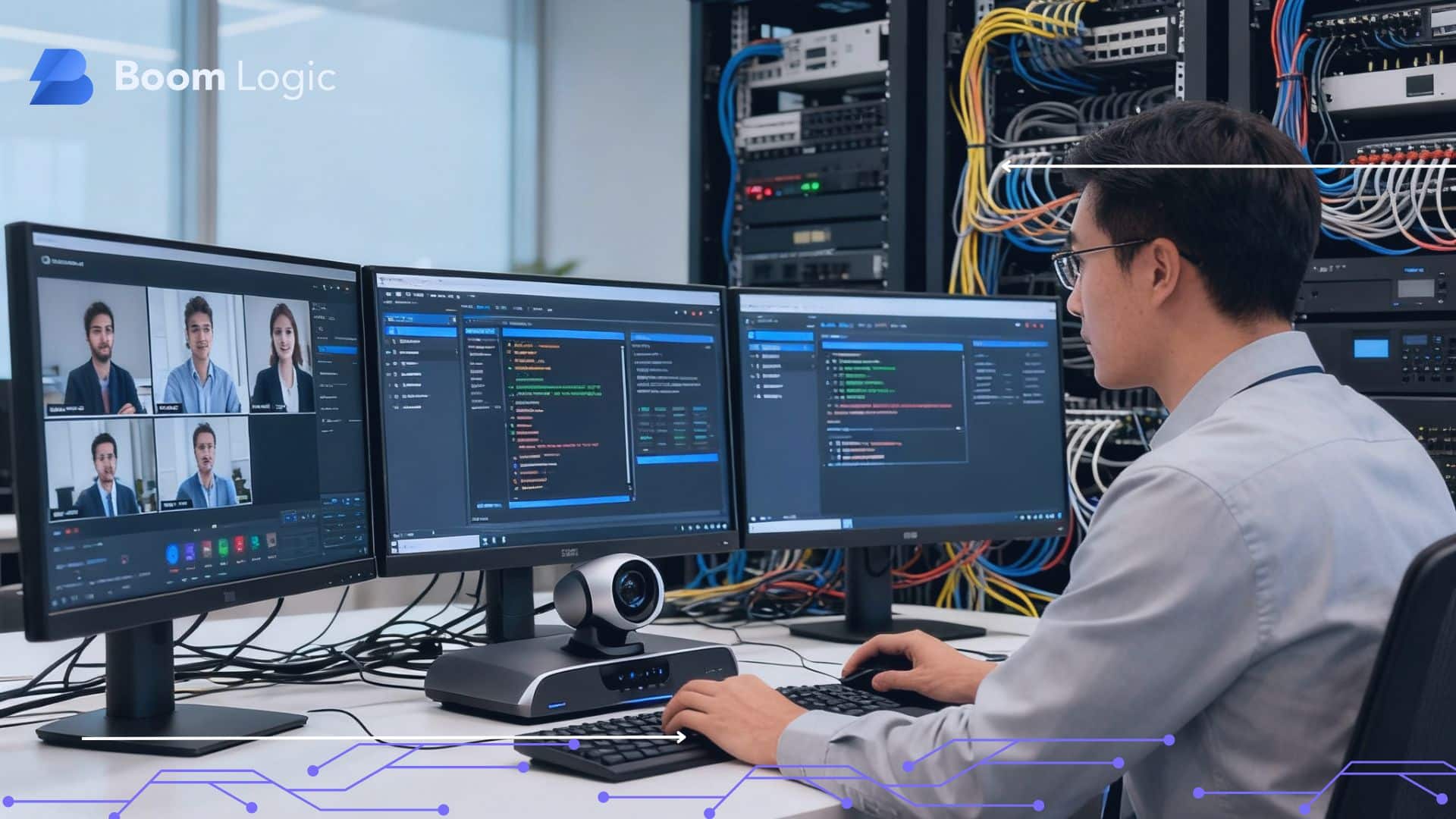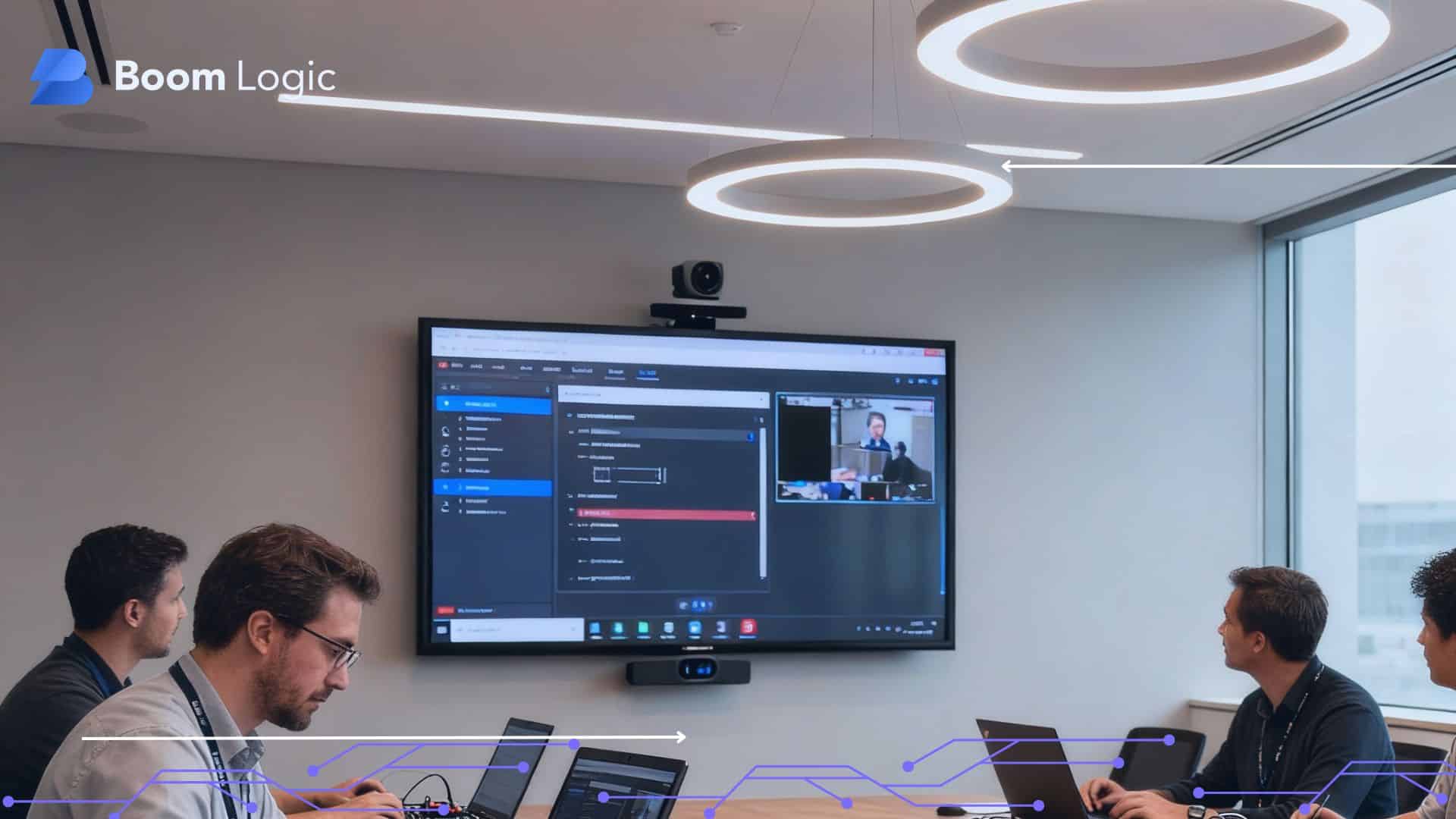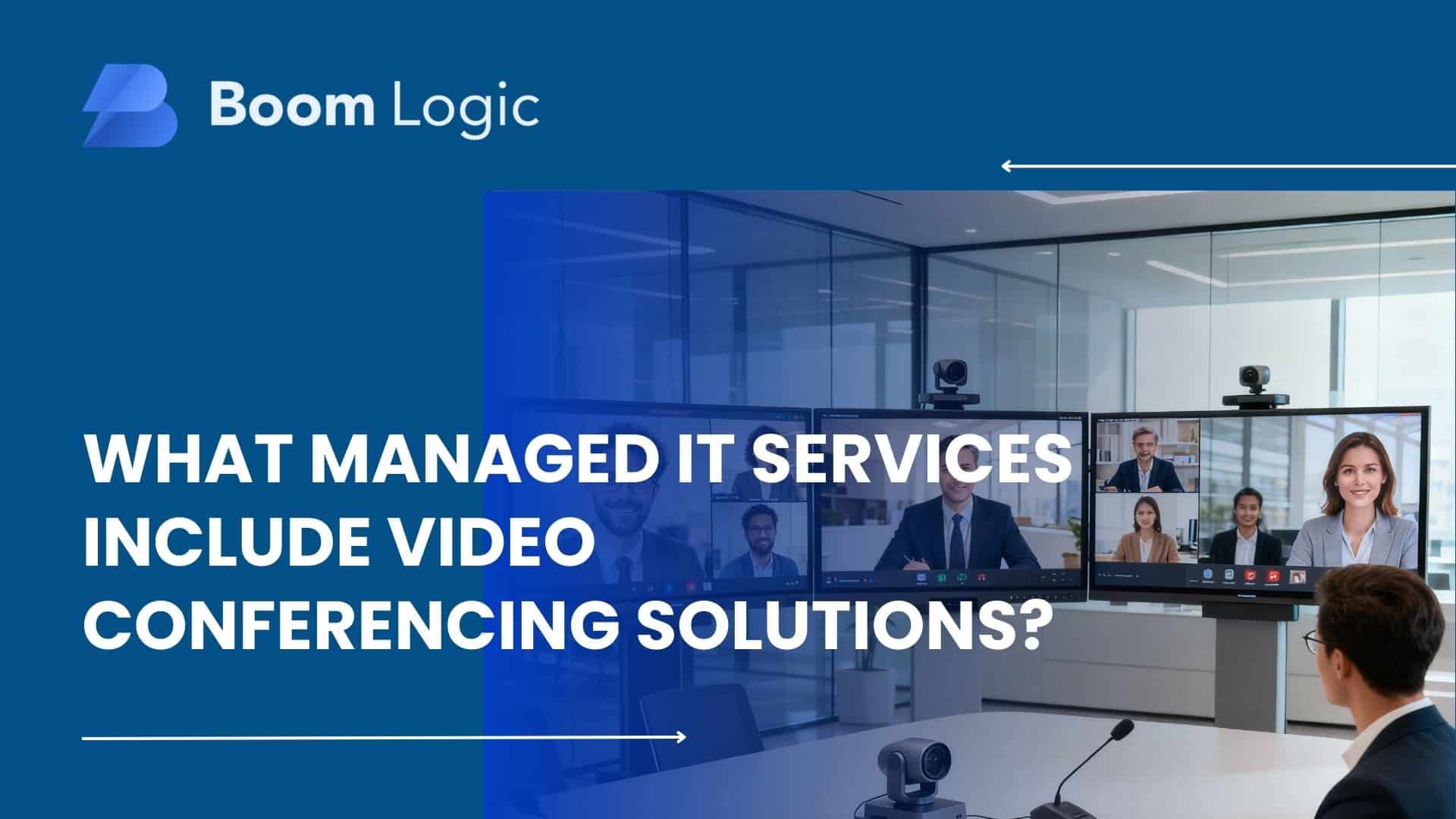Modern businesses rely heavily on seamless communication to maintain productivity, collaboration, and competitive advantage. As remote work becomes increasingly prevalent and organizations expand across multiple locations, the demand for robust video conferencing solutions has reached unprecedented levels. This shift has fundamentally changed how companies approach their technology infrastructure, particularly when evaluating managed IT services.
Video conferencing technology has evolved from a luxury feature to an essential business tool that directly impacts operational efficiency, client relationships, and employee satisfaction. Organizations now recognize that their communication systems must integrate seamlessly with existing technology infrastructure while providing reliable, high-quality performance across various devices and platforms.
When businesses evaluate managed IT service providers, understanding which services include comprehensive video conferencing solutions becomes crucial for making informed decisions. The integration of communication tools within managed IT packages offers significant advantages over piecemeal solutions, including streamlined support, unified billing, and optimized performance across all technology components.
The complexity of modern video conferencing extends far beyond simple video calls. Today’s solutions must support features like screen sharing, file collaboration, recording capabilities, mobile accessibility, and integration with existing business applications. This complexity requires specialized expertise and ongoing management that many organizations struggle to provide internally.
Managed IT service providers that include video conferencing solutions offer businesses the opportunity to leverage enterprise-grade communication tools without the burden of internal management. These comprehensive packages typically include everything from initial setup and configuration to ongoing maintenance, security updates, and user training, ensuring organizations can focus on their core business activities while maintaining cutting-edge communication capabilities.
Key Takeaways
For additional context, see this comprehensive guide.
- Comprehensive Integration: Leading managed IT services include video conferencing as part of their all-in-one technology solutions, providing seamless integration with existing business systems and unified support across all technology components.
- Enterprise-Grade Features: Professional video conferencing solutions within managed IT packages offer advanced capabilities including HD video quality, screen sharing, recording functions, mobile accessibility, and integration with productivity applications.
- Cost-Effective Approach: Including video conferencing within managed IT services typically provides better value than purchasing standalone solutions, offering predictable monthly costs and eliminating the need for separate vendor relationships.
- Scalability and Flexibility: Managed IT providers can easily scale video conferencing capabilities as businesses grow, adding users, features, or advanced functionality without requiring significant internal IT resources or expertise.
- Security and Compliance: Professional managed IT services ensure video conferencing solutions meet industry security standards and compliance requirements, providing encrypted communications and secure data handling protocols.
- Ongoing Support and Maintenance: Comprehensive managed IT packages include continuous monitoring, updates, troubleshooting, and user support for video conferencing systems, ensuring consistent performance and minimizing downtime.
- Training and Adoption: Quality managed IT providers offer user training and change management support to ensure successful adoption of video conferencing tools across the organization, maximizing return on investment.
Understanding Video Conferencing in Managed IT Services

For additional context, see detailed information on this topic.
Video conferencing has become an integral component of comprehensive managed IT service offerings, representing a fundamental shift in how technology providers approach business communication needs. Modern managed service providers recognize that communication tools must work seamlessly with other business systems to deliver maximum value and operational efficiency.
The inclusion of video conferencing within managed IT services reflects the growing understanding that technology infrastructure requires holistic management rather than fragmented vendor relationships. When communication systems operate independently from other business technology, organizations often experience compatibility issues, support complications, and inefficient resource allocation.
Professional video conferencing solutions offered through managed IT services typically include cloud-based platforms that provide flexibility, scalability, and reliability without requiring significant on-premises hardware investments. These solutions leverage enterprise-grade infrastructure to deliver consistent performance across various devices, locations, and network conditions.
Quality managed IT providers ensure their video conferencing offerings integrate smoothly with existing business applications, including email systems, calendar platforms, document management tools, and customer relationship management software. This integration creates a unified digital workspace that enhances productivity and reduces the learning curve for employees adapting to new communication tools.
The technical expertise required to properly configure, secure, and maintain video conferencing systems makes professional management essential for most organizations. Managed IT providers bring specialized knowledge of network optimization, security protocols, and system integration that ensures video conferencing solutions perform reliably while maintaining appropriate security standards.
Core Features of Professional Video Conferencing Solutions

For additional context, see our in-depth resource.
Professional video conferencing solutions included in managed IT services offer comprehensive feature sets designed to meet diverse business communication needs. These platforms typically provide high-definition video quality, crystal-clear audio, and robust connectivity options that ensure reliable performance across various network conditions and device types.
Screen sharing capabilities represent one of the most valuable features, allowing participants to collaborate on documents, presentations, and applications in real-time. Advanced screen sharing includes annotation tools, remote control functionality, and the ability to share specific applications rather than entire screens, providing flexibility and security for different meeting scenarios.
Recording and playback features enable organizations to capture important meetings, training sessions, and presentations for future reference or distribution to team members who cannot attend live sessions. Professional solutions include cloud storage for recordings, searchable transcripts, and easy sharing options that enhance the value of recorded content.
Mobile accessibility ensures team members can participate in video conferences from smartphones and tablets with full functionality, including video, audio, screen sharing, and chat features. This mobility support is crucial for organizations with remote workers, traveling employees, or field-based teams who need flexible communication options.
Integration capabilities allow video conferencing platforms to work seamlessly with existing business applications, including calendar systems for automatic meeting scheduling, email platforms for invitation distribution, and productivity suites for document collaboration during meetings. These integrations streamline workflows and reduce the administrative burden of managing communication tools.
Security features include end-to-end encryption, waiting room functionality, meeting passwords, and administrative controls that ensure confidential business communications remain protected. Professional managed IT services implement these security measures according to industry best practices and compliance requirements specific to each organization’s needs.
Implementation and Setup Process

The implementation of video conferencing solutions through managed IT services begins with a comprehensive assessment of existing technology infrastructure, business requirements, and communication workflows. This evaluation ensures the selected solution aligns with organizational needs while integrating effectively with current systems and processes.
Network assessment plays a crucial role in successful video conferencing implementation, as these applications require sufficient bandwidth and network stability to deliver quality performance. Managed IT providers analyze network capacity, identify potential bottlenecks, and recommend infrastructure improvements to support reliable video communication across all locations and devices.
User account setup and configuration involve creating individual profiles, establishing security permissions, and configuring integration settings with existing business applications. Professional managed IT services handle these technical details while ensuring each user receives appropriate access levels and feature availability based on their role and responsibilities within the organization.
Training and onboarding programs help employees understand how to effectively use video conferencing features, from basic meeting participation to advanced functionality like screen sharing, recording, and administrative controls. Comprehensive training ensures maximum adoption and return on investment while reducing support requests and user frustration.
Testing and optimization phases involve conducting trial meetings, evaluating performance across different scenarios, and fine-tuning settings to ensure optimal audio and video quality. This process identifies and resolves potential issues before full deployment, minimizing disruptions to business operations during the transition period.
Ongoing monitoring and support ensure video conferencing systems continue performing reliably after initial implementation. Managed IT providers track system performance, user adoption metrics, and potential issues while providing continuous support and optimization to maintain peak performance levels. For organizations seeking comprehensive IT solutions under one roof, this integrated approach delivers significant operational advantages.
Security and Compliance Considerations
Security represents a paramount concern for organizations implementing video conferencing solutions, particularly when handling sensitive business information, client communications, or regulated data. Professional managed IT services address these concerns through comprehensive security frameworks that protect communications while maintaining usability and performance.
Encryption protocols ensure all video, audio, and data transmissions remain secure during transit and storage. End-to-end encryption prevents unauthorized access to meeting content, while secure data centers protect recorded sessions and user information according to industry standards and regulatory requirements.
Access controls and authentication mechanisms prevent unauthorized meeting participation while providing administrators with granular control over user permissions, feature availability, and content sharing capabilities. These controls enable organizations to maintain security standards while providing appropriate flexibility for different user groups and meeting types.
Compliance requirements vary significantly across industries, with healthcare organizations requiring HIPAA compliance, financial institutions needing SOX adherence, and government contractors following specific security protocols. Managed IT providers specializing in regulated industries understand these requirements and configure video conferencing solutions accordingly. Organizations in healthcare can benefit from specialized compliance-focused IT services that ensure all communication tools meet regulatory standards.
Data retention and privacy policies govern how meeting recordings, chat logs, and user information are stored, accessed, and eventually deleted according to organizational policies and legal requirements. Professional managed IT services establish clear data handling procedures that protect privacy while meeting business needs for information retention and accessibility.
Regular security updates and vulnerability assessments ensure video conferencing platforms remain protected against emerging threats and security risks. Managed IT providers monitor security bulletins, apply necessary patches, and conduct periodic security reviews to maintain robust protection for business communications.
Cost Benefits and ROI Analysis
Including video conferencing within managed IT services typically provides significant cost advantages compared to purchasing standalone solutions or managing multiple vendor relationships. The bundled approach eliminates redundant administrative costs while providing predictable monthly expenses that simplify budgeting and financial planning.
Reduced travel expenses represent one of the most immediate and measurable benefits of comprehensive video conferencing implementation. Organizations can significantly decrease spending on business travel, hotel accommodations, and related expenses while maintaining effective communication with clients, partners, and remote team members.
Increased productivity results from improved collaboration capabilities, reduced meeting setup time, and enhanced communication efficiency across distributed teams. Video conferencing enables faster decision-making, more frequent team interactions, and better project coordination that directly impacts business performance and revenue generation.
Scalability advantages allow organizations to adjust video conferencing capacity as business needs change without requiring significant capital investments or long-term commitments. Managed IT providers can easily add users, upgrade features, or expand functionality to accommodate growth or changing requirements.
Support cost reductions occur when video conferencing solutions integrate with comprehensive managed IT services rather than requiring separate vendor relationships and support contracts. Single-point-of-contact support simplifies troubleshooting, reduces resolution time, and eliminates the finger-pointing that often occurs with multiple technology vendors.
Infrastructure optimization ensures video conferencing solutions leverage existing technology investments while identifying opportunities for efficiency improvements across the entire IT environment. This holistic approach maximizes return on investment while minimizing unnecessary technology spending. Organizations can explore equipment control strategies that further enhance reliability and cost-effectiveness.
Integration with Business Applications
Modern video conferencing solutions achieve maximum value through seamless integration with existing business applications and workflows. Professional managed IT services ensure these integrations work reliably while maintaining security standards and user experience quality across all connected systems.
Calendar integration enables automatic meeting scheduling, participant notification, and reminder distribution through existing scheduling platforms. Users can create video conferences directly from their calendar applications, with meeting links and access information automatically generated and distributed to participants.
Email system integration streamlines meeting invitations, follow-up communications, and document sharing related to video conferences. This connectivity ensures all meeting-related communications flow through established business channels while maintaining consistent formatting and security protocols.
Document management integration allows real-time collaboration on files, presentations, and projects during video conferences. Participants can access, edit, and share documents directly within the video conferencing platform while maintaining version control and security permissions established in the document management system.
Customer relationship management integration enables sales teams, account managers, and customer service representatives to initiate video conferences directly from client records while automatically logging meeting details and outcomes. This integration improves client relationship management while reducing administrative overhead.
Productivity suite integration connects video conferencing with applications like Microsoft Office, Google Workspace, or other business software platforms. Users can share applications, collaborate on documents, and access business tools during meetings without switching between multiple platforms or compromising security.
The complexity of these integrations requires specialized expertise and ongoing management that many organizations lack internally. Managed IT providers bring the technical knowledge and experience necessary to implement and maintain these connections while ensuring optimal performance across all integrated systems. Companies seeking direct provider control often find better integration results with fewer compatibility issues.
Boom Logic’s Comprehensive Video Conferencing Solutions
Boom Logic delivers enterprise-grade video conferencing solutions as an integral component of our comprehensive managed IT services. Our approach ensures seamless integration with existing business systems while providing the reliability, security, and performance that modern organizations require for effective communication.
Our video conferencing implementation process begins with thorough assessment of current technology infrastructure, business communication needs, and growth projections. This evaluation enables us to design solutions that not only meet immediate requirements but also scale effectively as organizations evolve and expand their operations.
We provide complete setup and configuration services, including network optimization, security implementation, user account creation, and integration with existing business applications. Our technical team handles all aspects of deployment while ensuring minimal disruption to daily business operations during the transition period.
Ongoing support and maintenance ensure video conferencing systems continue performing optimally while adapting to changing business needs. Our monitoring systems track performance metrics, identify potential issues before they impact operations, and provide proactive maintenance to prevent problems and optimize system performance.
Training and user adoption support help organizations maximize their investment in video conferencing technology. We provide comprehensive training programs, user documentation, and ongoing support to ensure employees can effectively leverage all available features and capabilities.
Security and compliance management ensure all video conferencing communications meet industry standards and regulatory requirements specific to each organization’s operational environment. Our security protocols protect sensitive business information while maintaining the usability and functionality that employees need for productive collaboration.
Frequently Asked Questions
What video conferencing features are typically included in managed IT services?
Comprehensive managed IT services typically include HD video and audio quality, screen sharing capabilities, meeting recording, mobile device support, calendar integration, and security features like encryption and access controls. Advanced features may include virtual backgrounds, breakout rooms, and integration with business applications.
How do managed IT providers ensure video conferencing security?
Professional managed IT providers implement end-to-end encryption, secure authentication protocols, access controls, and regular security updates. They also establish data retention policies, monitor for security threats, and ensure compliance with industry regulations relevant to each organization’s requirements.
Can video conferencing solutions scale with business growth?
Yes, professional managed IT services design video conferencing solutions with scalability in mind. Providers can easily add users, upgrade features, expand functionality, or integrate additional locations as business needs evolve without requiring significant infrastructure changes or capital investments.
What level of support is provided for video conferencing systems?
Comprehensive managed IT services include ongoing technical support, system monitoring, performance optimization, user training, and troubleshooting assistance. Support typically covers everything from basic user questions to complex technical issues, ensuring reliable system performance and user satisfaction.
How does video conferencing integration benefit business operations?
Integrated video conferencing solutions streamline workflows by connecting with existing business applications like calendars, email systems, and document management platforms. This integration reduces administrative overhead, improves user adoption, and enhances overall productivity across the organization.
What network requirements are necessary for reliable video conferencing?
Reliable video conferencing requires sufficient bandwidth, network stability, and proper quality of service configuration. Managed IT providers assess network capacity, identify potential bottlenecks, and recommend infrastructure improvements to ensure optimal performance across all locations and devices.
Are there industry-specific compliance considerations for video conferencing?
Yes, different industries have specific compliance requirements for communication systems. Healthcare organizations need HIPAA compliance, financial institutions require SOX adherence, and other regulated industries have specific security protocols. Professional managed IT providers configure solutions to meet these requirements.
How do managed IT services handle video conferencing maintenance and updates?
Managed IT providers handle all maintenance tasks including software updates, security patches, performance optimization, and system monitoring. They proactively identify and resolve issues while ensuring systems remain current with the latest features and security enhancements without disrupting business operations.
Conclusion
Video conferencing solutions have evolved from optional communication tools to essential business infrastructure that directly impacts organizational success. The integration of these capabilities within comprehensive managed IT services provides organizations with significant advantages over standalone solutions or fragmented vendor relationships.
Professional managed IT providers offer video conferencing solutions that combine enterprise-grade features, robust security, seamless integration, and ongoing support within predictable cost structures. This approach enables organizations to leverage cutting-edge communication technology without the burden of internal management or the complexity of multiple vendor relationships.
The benefits extend beyond simple cost savings to include improved productivity, enhanced collaboration, better client relationships, and increased operational flexibility. Organizations that choose managed IT services with integrated video conferencing capabilities position themselves for success in an increasingly connected business environment while maintaining focus on their core competencies.
As businesses continue adapting to remote work trends, global collaboration requirements, and evolving communication expectations, the value of professional video conferencing solutions within managed IT services will only increase. Organizations that invest in comprehensive, professionally managed communication infrastructure today will enjoy competitive advantages and operational efficiencies that support long-term growth and success.


